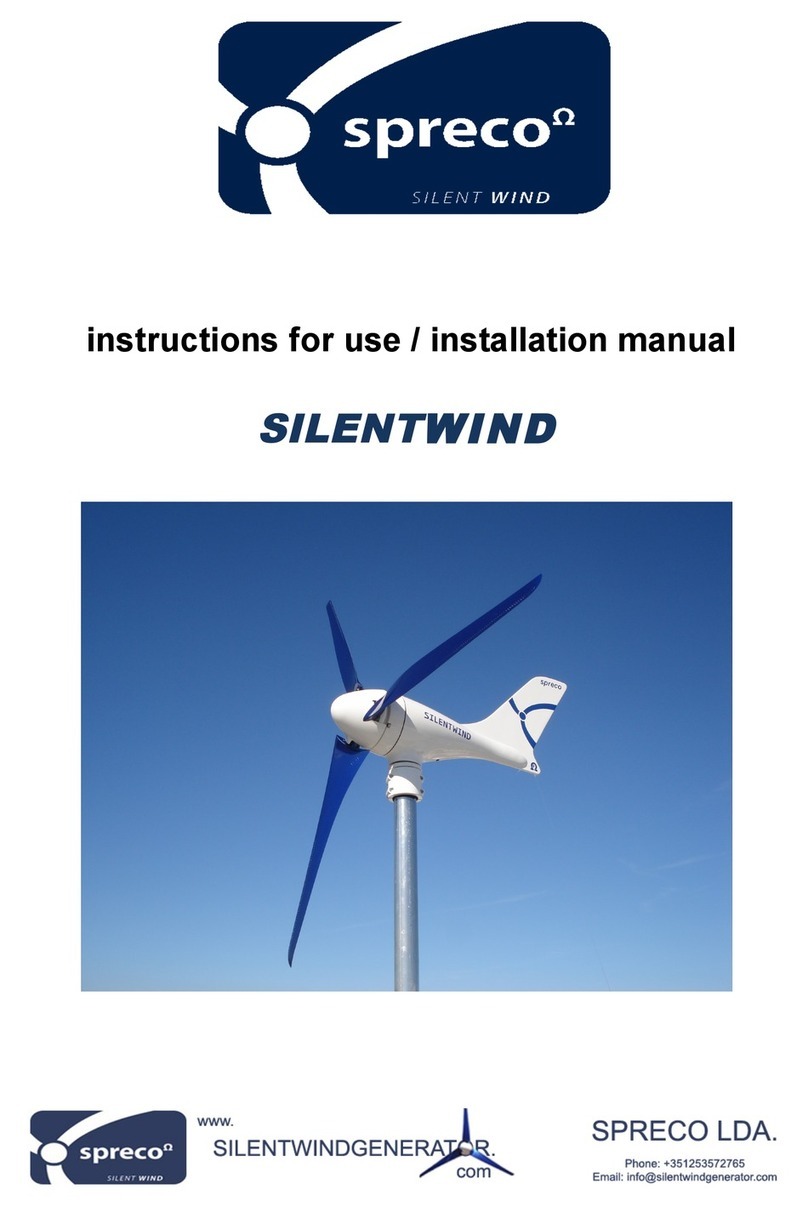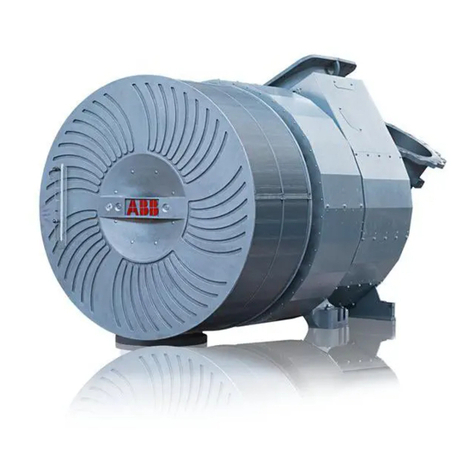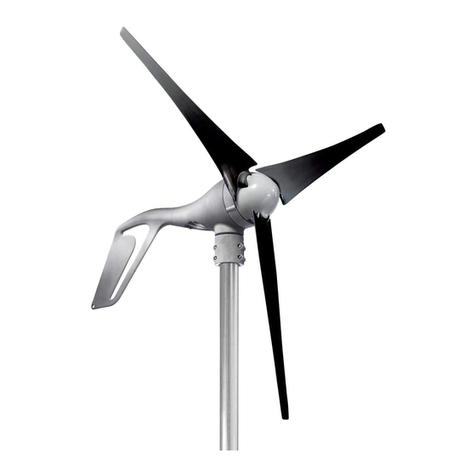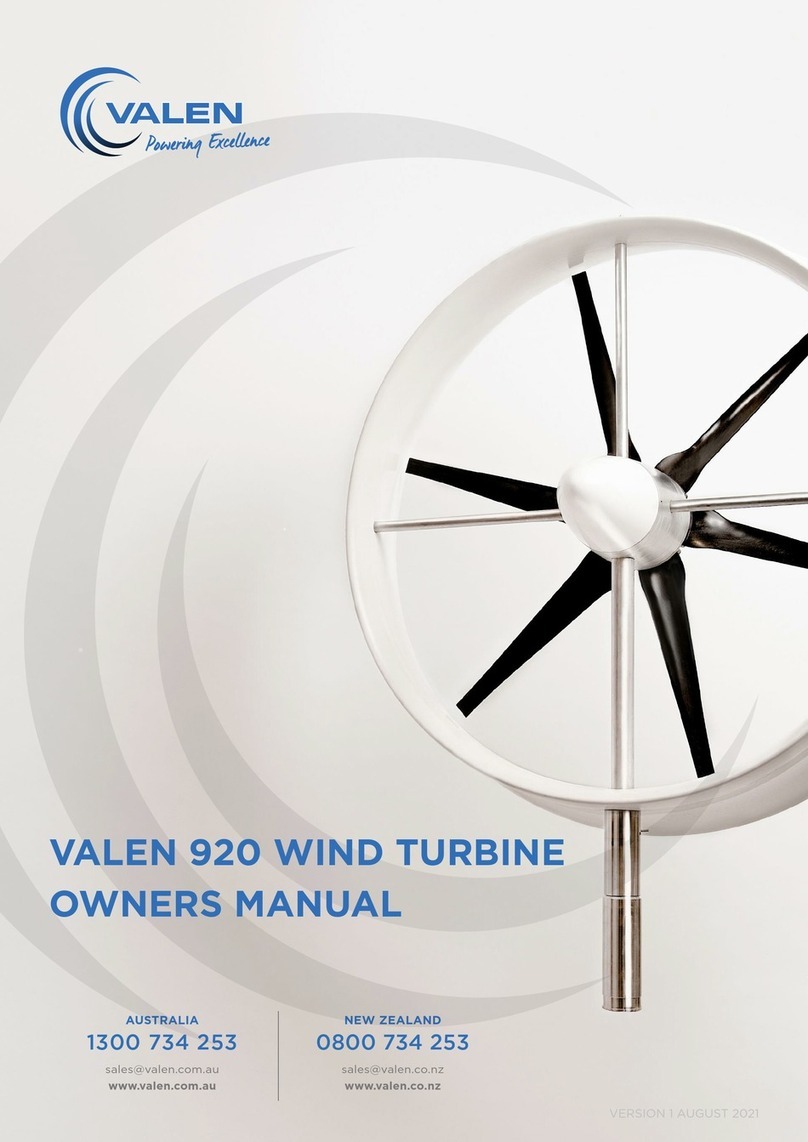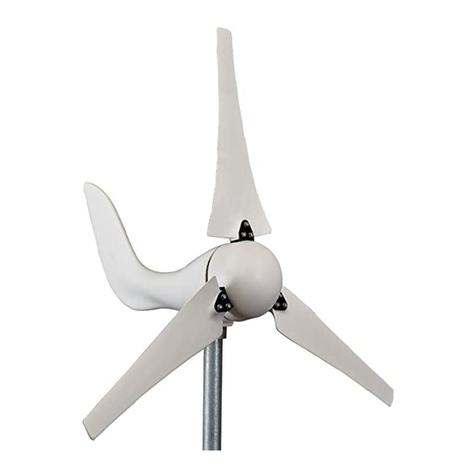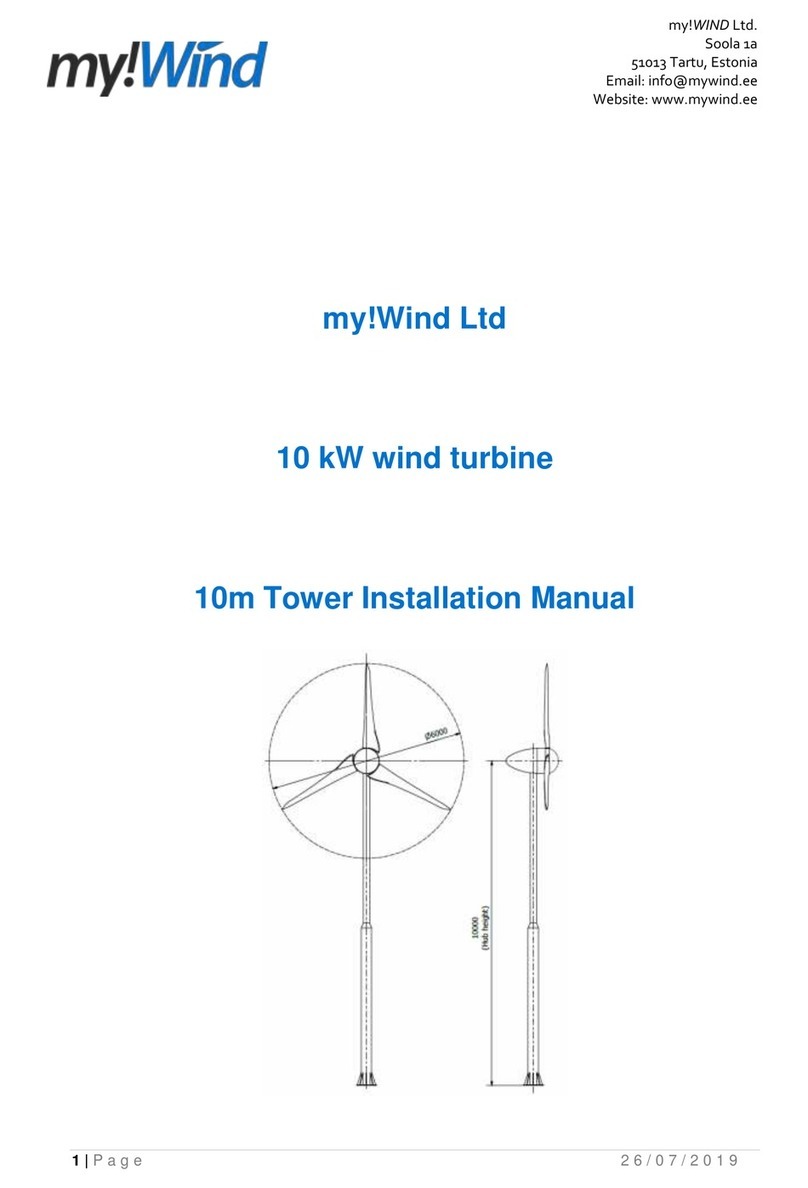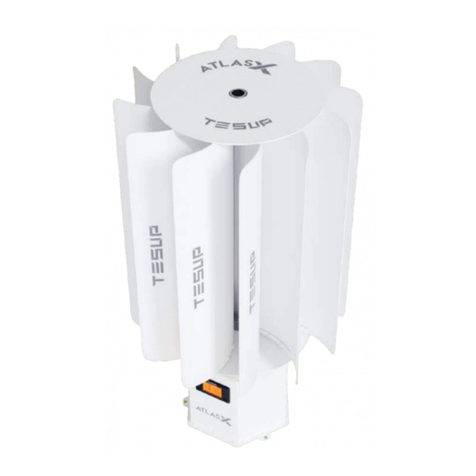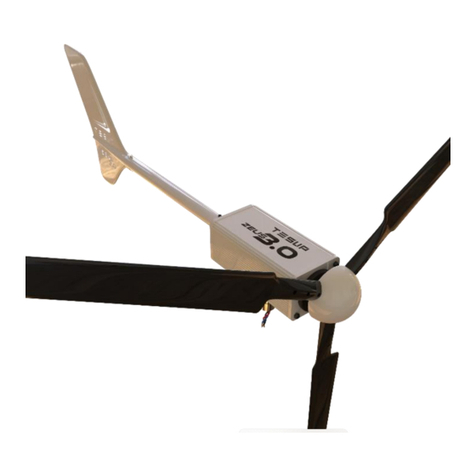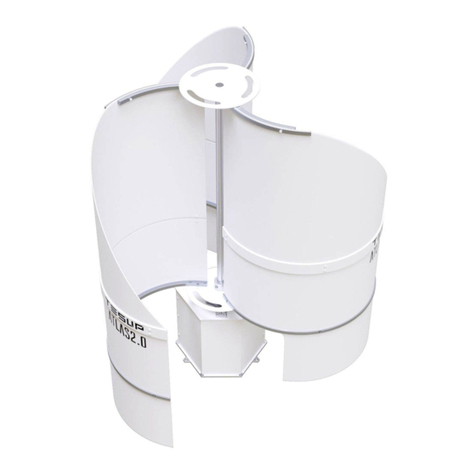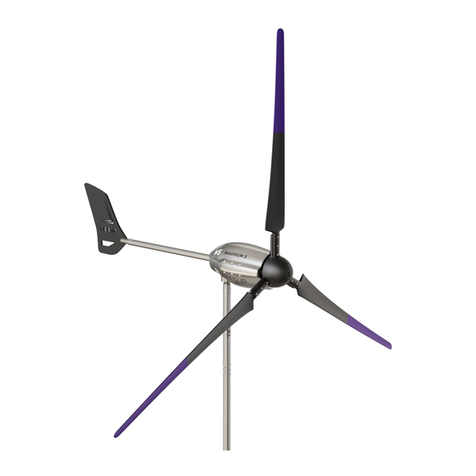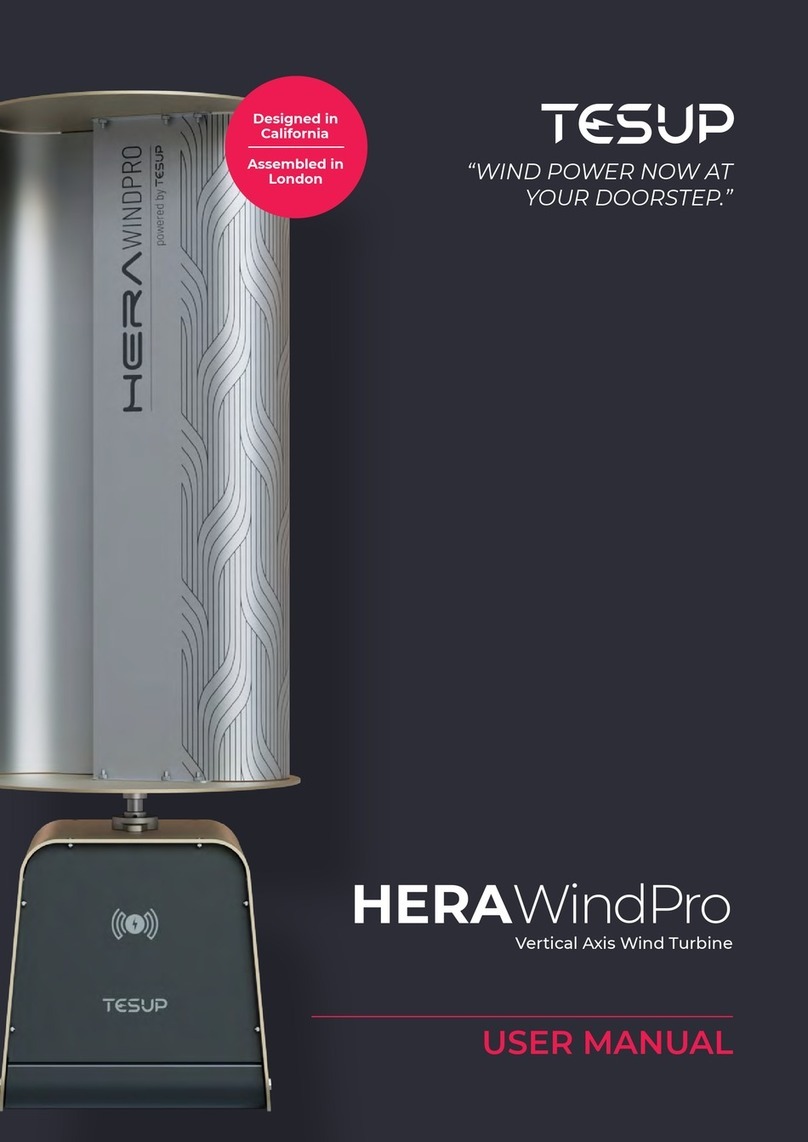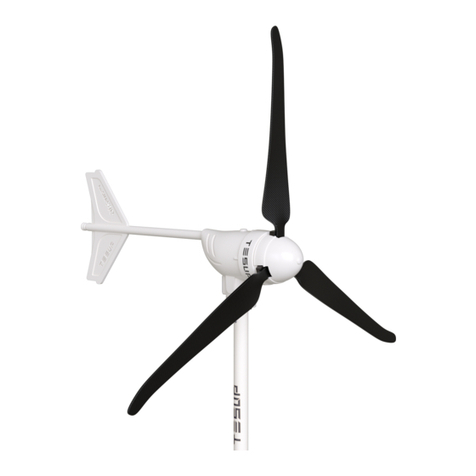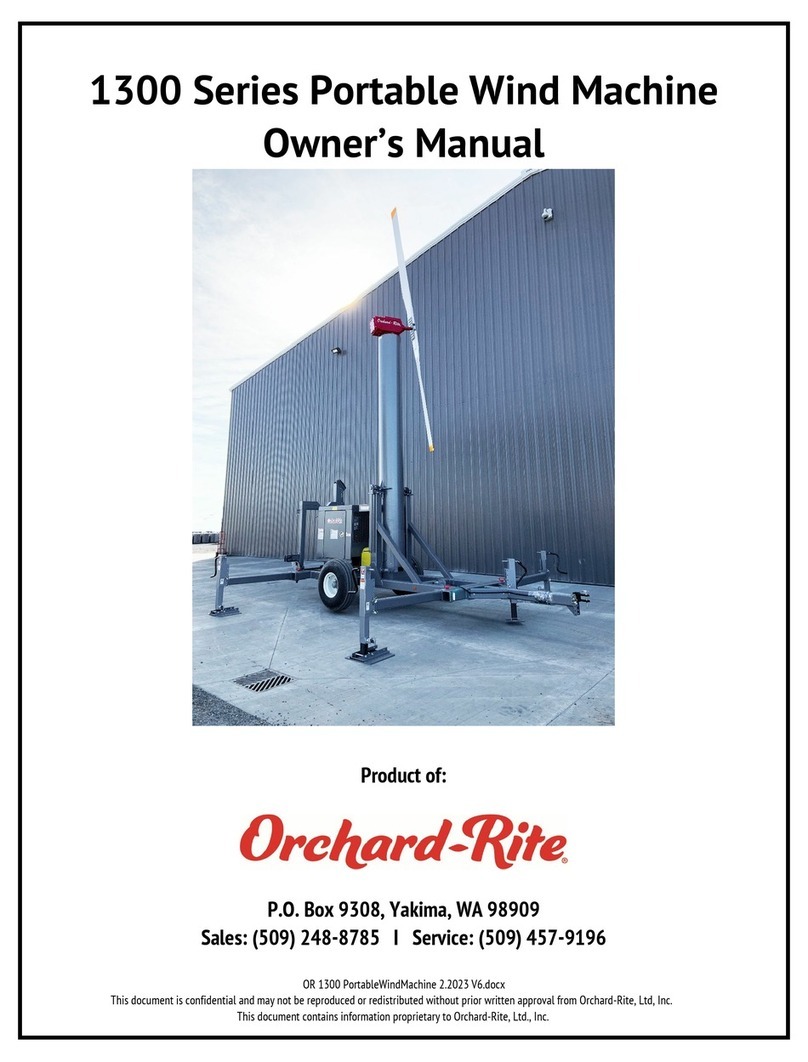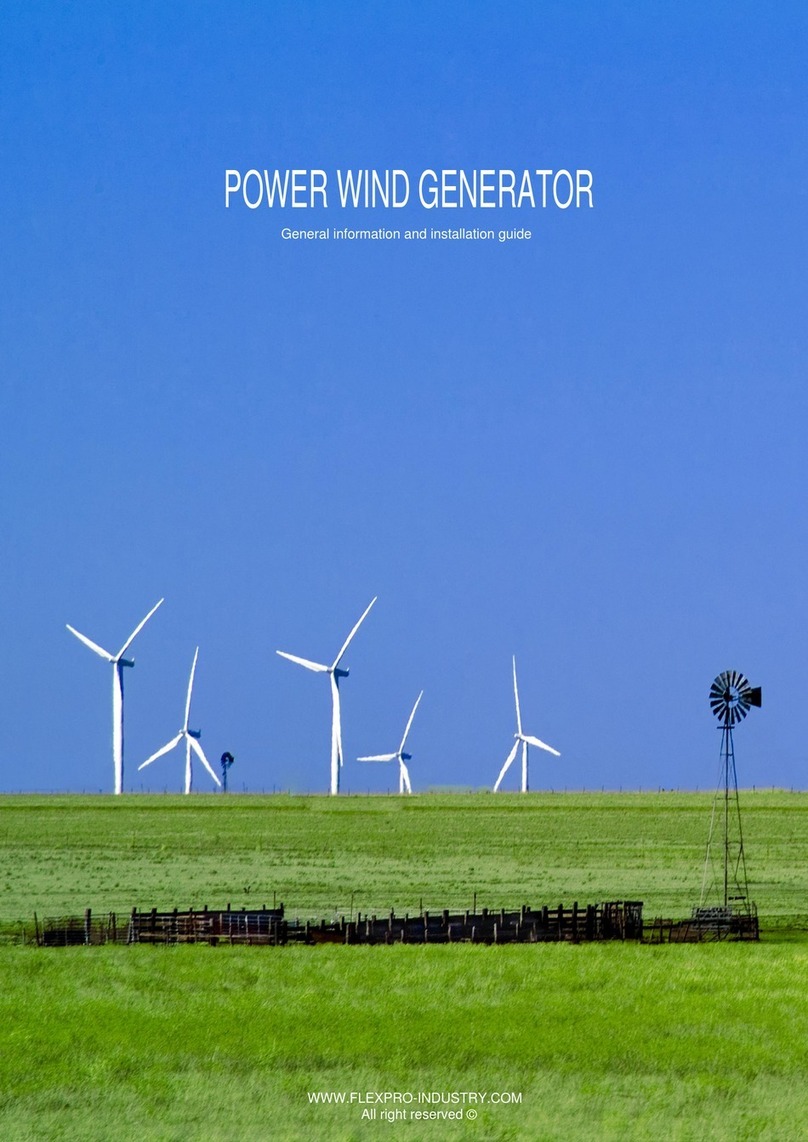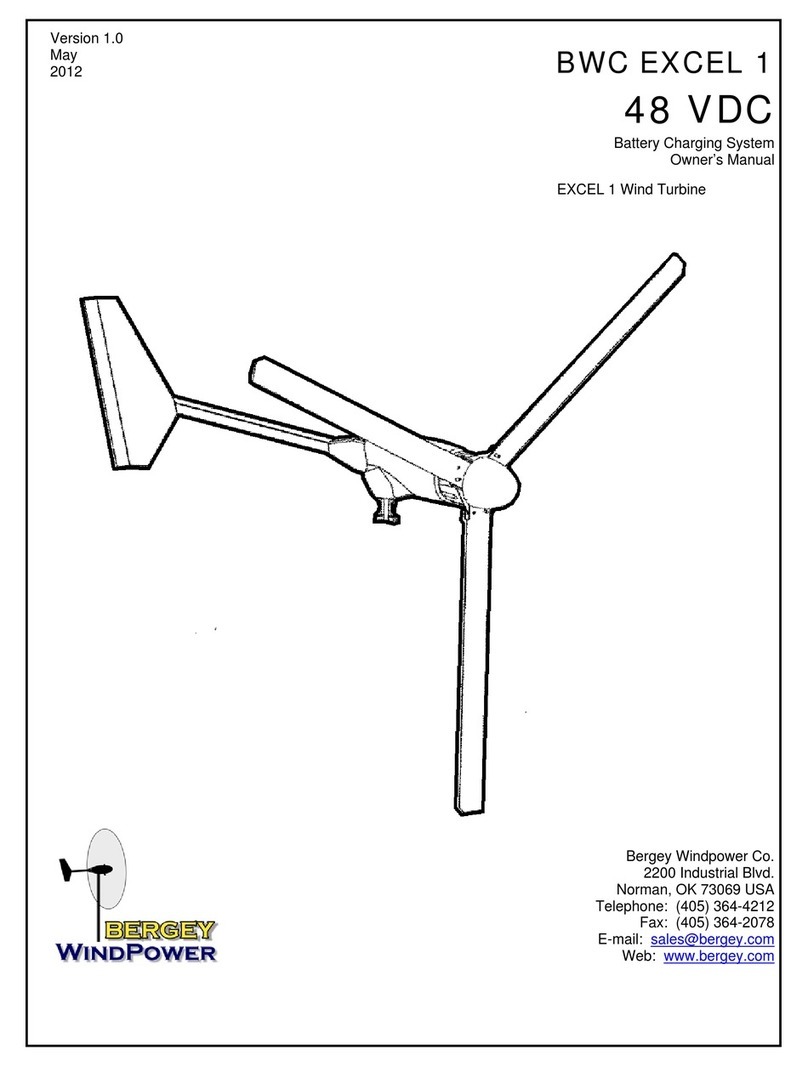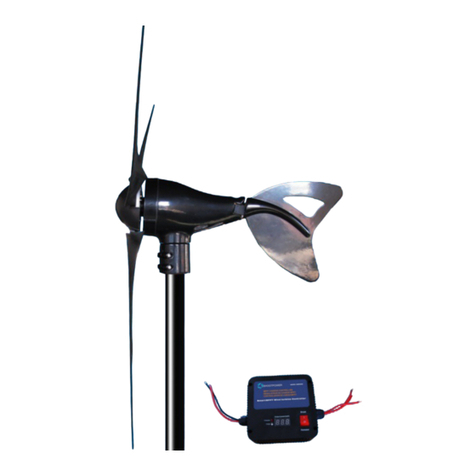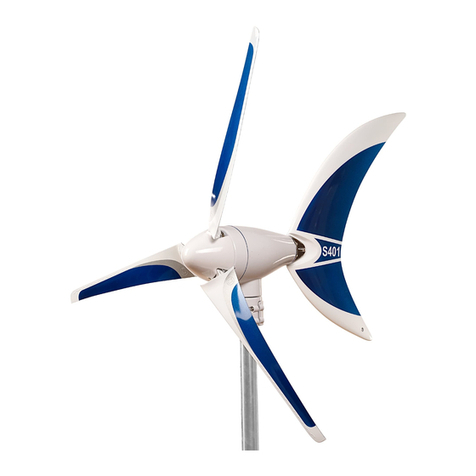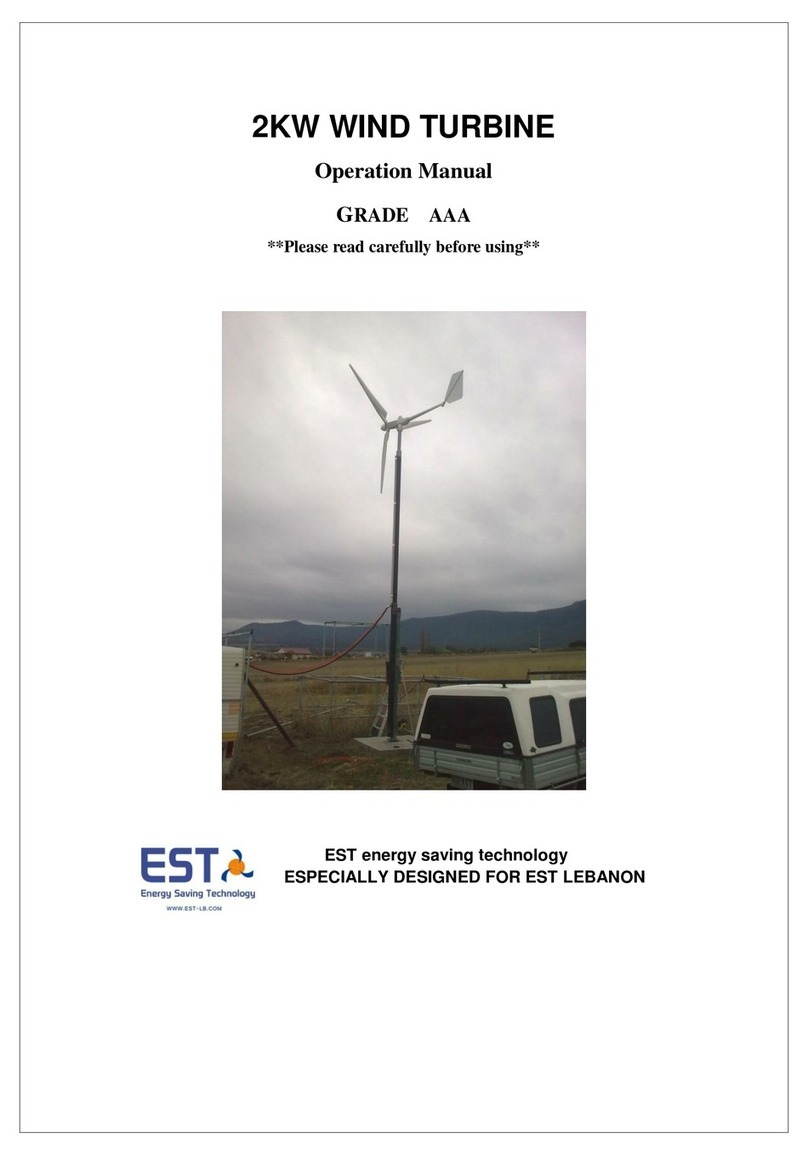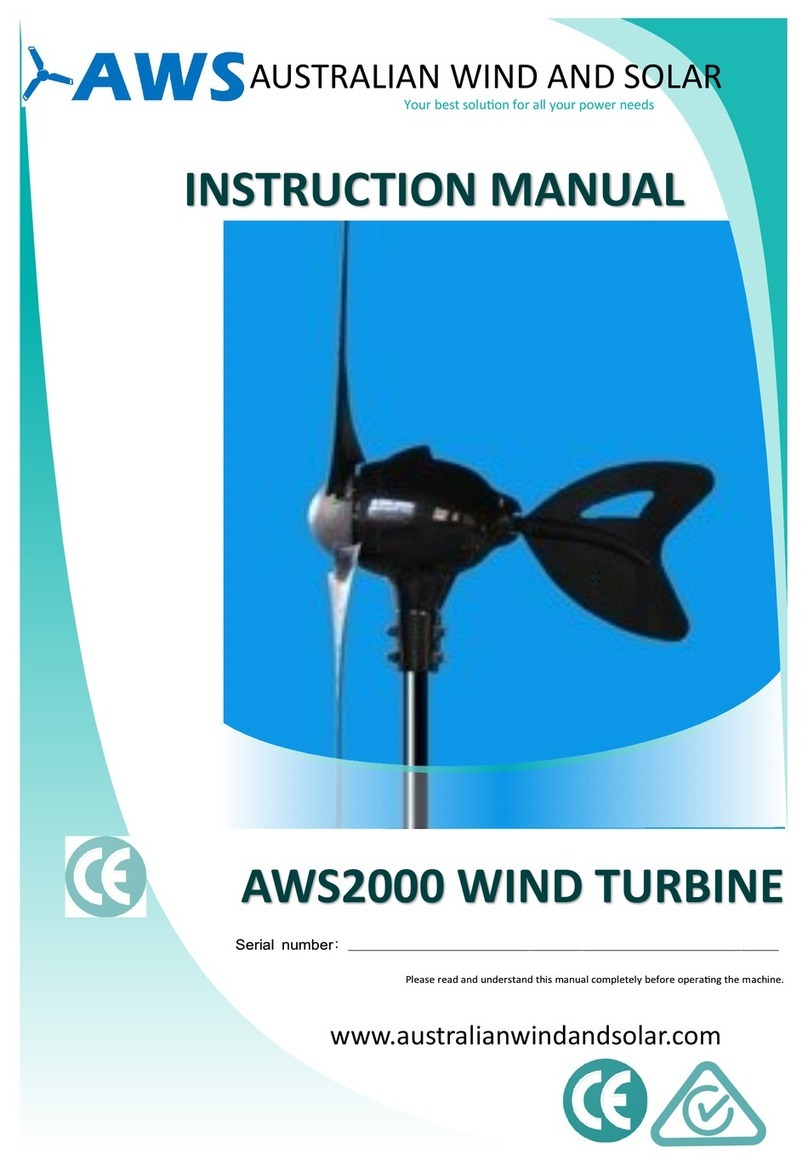7.2 Requirements at the place of use ...............................................................
7.2.1 Permissible wind class, footprint and minimum clearances .......................
7.2.2 Tower foundation ........................................................................................
7.3 Unpacking the components ........................................................................
7.4 Assembling the wind turbine..................................................................
7.5 Electrical connections .................................................................................
7.6 Erecting the wind turbine ............................................................................
8 Normal operation ..................................................................................
8.1 Switching on the wind turbine system.........................................................
8.2 Restart after an emergency ........................................................................
9 Shutting down the wind turbine system ...............................................
9.1 Emergency shut-down ...............................................................................
9.2 Temporary shut-down................................................................................
9.3 Prolonged shut-down.................................................................................
10 Maintenance .........................................................................................
10.1 Safety precautions during maintenance work.............................................
10.2 Inspection and maintenance schedule .......................................................
10.3 Maintenance and cleaning by the user .......................................................
11 Troubleshooting and diagnostics ...........................................................
11.1 Errors with LED...........................................................................................
11.2 Errors without LED......................................................................................
12 Removal from service and disposal .......................................................
12.1 Final decommissioning of the wind turbine system ....................................
12.2 Disposal of the wind turbine system and components ...............................
13 Declaration of conformity .....................................................................
14 Index......................................................................................................
15 Notes ....................................................................................................
16
